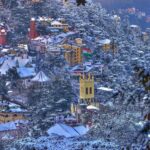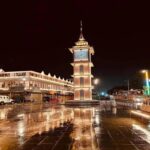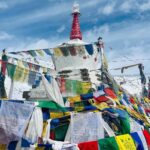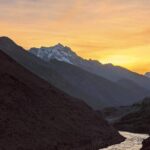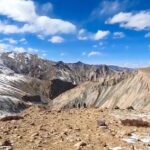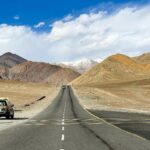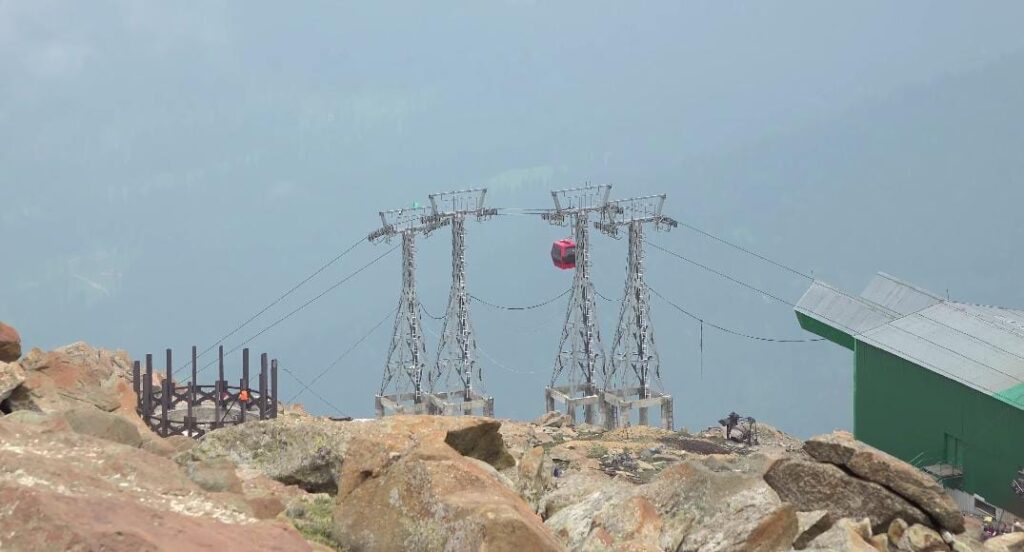
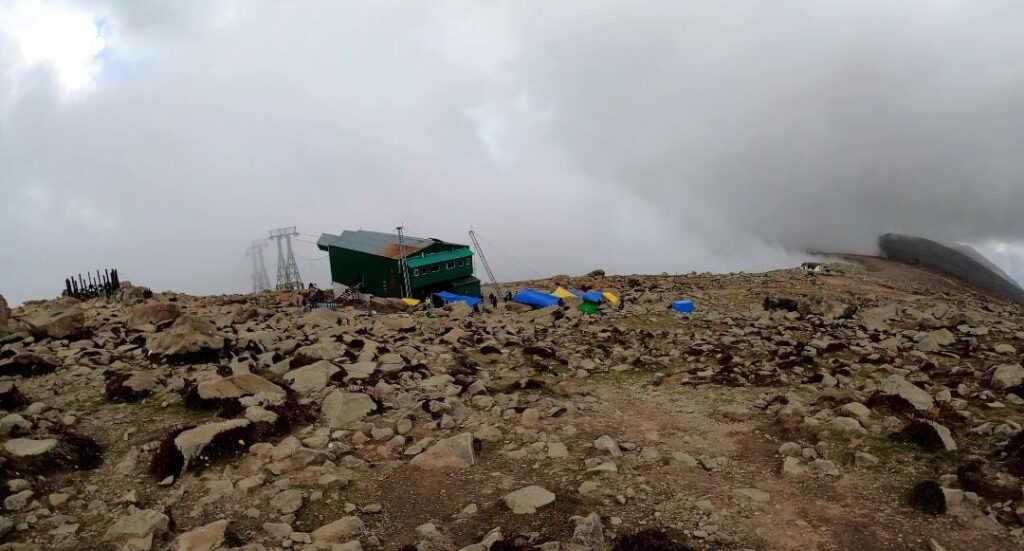
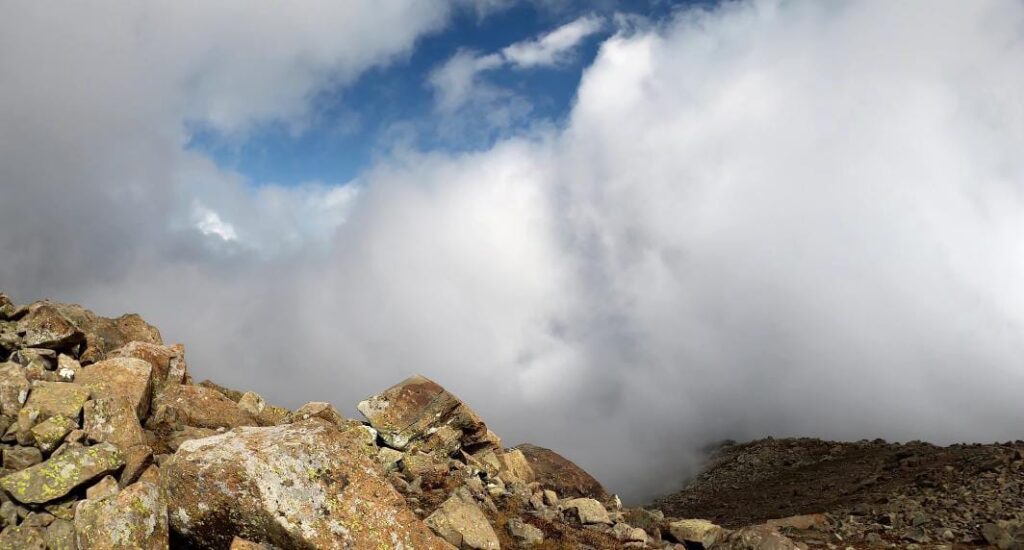
Apharwat Peak
Apharwat Peak is the highest point in Gulmarg, a hill station in the Indian union territory of Jammu and Kashmir. It is situated at an altitude of 4,390 meters (14,403 feet) above sea level. The peak is covered in snow for most of the year and offers stunning views of the surrounding mountains, glaciers, and valleys.
The best way to reach Apharwat Peak is to take the Gulmarg Gondola, which is a cable car system that takes you up to the second phase of the peak. The gondola ride takes about 12 minutes and offers some incredible views of the valley below.
Once you reach the top of the peak, you can enjoy the panoramic views, go skiing or snowboarding, or simply take a walk and enjoy the fresh mountain air. There are also a few restaurants and cafes at the top of the peak where you can relax and refuel.
Apharwat Peak is a popular tourist destination, especially during the winter months when the snow is at its best. However, it is also a beautiful place to visit during the summer months when the weather is warmer and the flowers are in bloom.
History of Apharwat Peak Gulmarg
The history of Apharwat Peak is long and complex. The peak has been inhabited by humans for centuries, and it has played an important role in local culture and tradition.
The earliest known inhabitants of the area around Apharwat Peak were the Gujjars, a nomadic people who came to the region in the 13th century. The Gujjars were skilled shepherds and farmers, and they helped to develop the area’s economy.
In the 16th century, the Mughal Empire conquered the region around Apharwat Peak. The Mughals built a number of forts and other structures in the area, including the Apharwat Fort, which is located at the base of the peak.
After the decline of the Mughal Empire in the 18th century, the region around Apharwat Peak came under the control of a number of different rulers, including the Sikhs, the Afghans, and the British.
In the 19th century, the British developed the area around Apharwat Peak as a tourist destination. The British built a number of hotels and other facilities in the area, and they promoted Apharwat Peak as a place to enjoy skiing and other winter sports.
After independence in 1947, the region around Apharwat Peak became part of the Indian union territory of Jammu and Kashmir. The Indian government has continued to promote Apharwat Peak as a tourist destination, and the peak remains a popular place to visit for skiing, snowboarding, and other outdoor activities.
In recent years, the history of Apharwat Peak has been marked by conflict. The region around the peak is located near the Line of Control (LOC), which separates India and Pakistan. The LOC has been the site of armed conflict between India and Pakistan for many years, and this has had a negative impact on tourism in the area.
Despite the conflict, Apharwat Peak remains a beautiful and popular tourist destination. The peak offers stunning views of the surrounding mountains and valleys, and it is a great place to enjoy winter sports. The history of Apharwat Peak is long and complex, but the peak remains a symbol of hope and resilience for the people of the region.
Geology of Apharwat Peak
The geology of Apharwat Peak is complex and varied. The peak is composed of a number of different rock formations, including:
Slate: Slate is a type of rock made from shale. It’s smooth and can break into thin sheets.
Sandstone: Sandstone is a rock formed from sand. It’s like lots of sand grains stuck together.
Limestone: Limestone is a rock made from old sea creatures. It’s full of calcium carbonate.
Gneiss: Gneiss is a rock made from granite. It has stripes and tough, locked-together crystals.
The rocks at Apharwat Peak took millions of years to form. They were shaped by different natural processes, like:
- Metamorphosis: Changing one kind of rock into another, like shale turning into slate.
- Sedimentation: Sand and other materials building up over time, making sandstone.
- Fossils: Ancient marine life leaving behind remains, which become limestone.
- Heat and Pressure: Granite turning into gneiss because of high heat and pressure.
These processes made the unique rock formations you see at Apharwat Peak.
Subduction
- Subduction is a process in which one tectonic plate is forced under another tectonic plate. This process can cause the rocks at the surface to be melted and then
Folding
- Folding is a process in which rocks are bent or deformed under pressure. This process can cause the rocks to form folds or ridges.
Faulting
- Faulting is a process in which rocks are broken and displaced along a fault line. This process can cause the rocks to form cliffs or valleys.
The geology of Apharwat Peak has played a major role in shaping the landscape of the area. The different rock formations have different physical properties, which has led to the formation of different landforms, such as mountains, valleys, and plateaus.
The geology of the area has also influenced the development of the local ecosystem, as different plants and animals are adapted to different types of rocks and soils. The geology of Apharwat Peak is a fascinating and complex topic. It is a reminder of the power of nature and the forces that have shaped the landscape of the region.
what is the apharwat peak height
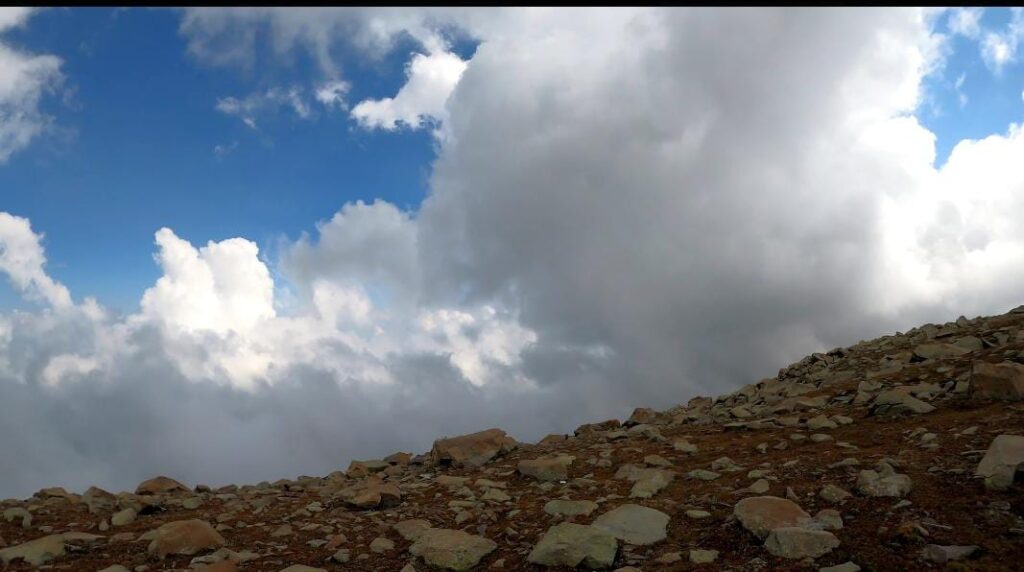
The height of Apharwat Peak is 4,390 meters (14,403 feet) above sea level. It is the highest point in Gulmarg, a hill station in the Indian union territory of Jammu and Kashmir. The peak is covered in snow for most of the year and offers stunning views of the surrounding mountains, glaciers, and valleys.
The best way to reach Apharwat Peak is to take the Gulmarg Gondola, which is a cable car system that takes you up to the second phase of the peak. The gondola ride takes about 12 minutes and offers some incredible views of the valley below.
Once you reach the top of the peak, you can enjoy the panoramic views, go skiing or snowboarding, or simply take a walk and enjoy the fresh mountain air. There are also a few restaurants and cafes at the top of the peak where you can relax and refuel.
Apharwat Peak is a popular tourist destination, especially during the winter months when the snow is at its best. However, it is also a beautiful place to visit during the summer months when the weather is warmer and the flowers are in bloom.
what is the location apharwat peak
Apharwat Peak is situated at an altitude of 4,390 meters (14,403 feet) above sea level. The peak is located about 65 kilometers (40 miles) north of Srinagar, the capital of Jammu and Kashmir.
The nearest town to Apharwat Peak is Gulmarg, which is a popular tourist destination known for its skiing slopes. The peak can be reached from Gulmarg by taking the Gulmarg Gondola, which is a cable car system that takes you up to the second phase of the peak. The gondola ride takes about 12 minutes and offers some incredible views of the valley below.
Apharwat Peak is a popular tourist destination, especially during the winter months when the snow is at its best. However, it is also a beautiful place to visit during the summer months when the weather is warmer and the flowers are in bloom.
Best season to visit apharwat peak

Apharwat Peak is a popular mountain peak located in the Pir Panjal range of the Himalayas in the Jammu and Kashmir, specifically in the Gulmarg region. The weather and conditions at Apharwat Peak can vary significantly from season to season:
Spring (March to May): Spring is a beautiful time to visit Apharwat Peak. The snow starts melting, and the landscape begins to bloom with colorful flowers. The temperature starts to rise, making it a pleasant time for hiking and exploring the area. Skiing may still be possible in March, but as the season progresses, the snow cover decreases.
Summer (June to August): Summer is the warmest season at Apharwat Peak, with temperatures ranging from mild to moderately cool. The snow has typically melted by this time, revealing lush green meadows. It’s a great time for trekking and taking in the breathtaking scenery. The famous Gulmarg Gondola operates during the summer months, allowing tourists to reach higher altitudes and enjoy panoramic views.
Autumn (September to November): Autumn in Apharwat Peak offers stunning views as the leaves change color, and the landscape becomes a mix of gold and orange. The weather is cool and crisp, making it an ideal time for trekking and photography. However, as the season progresses, temperatures drop, and snowfall may begin in November.
Winter (December to February): Winter is the peak of the snow season at Apharwat Peak. The region receives heavy snowfall, and the landscape is covered in a thick blanket of snow, making it a popular destination for winter sports enthusiasts. Skiing and snowboarding are major attractions during this time. The temperature can drop significantly below freezing, so visitors should be prepared for cold weather.
Tips for visitors
Visiting Apharwat Peak in Gulmarg, can be an incredible experience, but it’s essential to be well prepared, especially considering the mountainous terrain and varying weather conditions. Here are some tips for visitors:
Check Weather Conditions: Before heading to Apharwat Peak, check the weather forecast for the area. Weather conditions can change rapidly in the mountains, and it’s important to know what to expect, especially if you plan to engage in outdoor activities.
Dress in Layers: Dress warmly in layers, especially if you’re visiting during the colder months. Wear insulated clothing, waterproof outer layers, and sturdy, waterproof boots. Don’t forget to wear a hat, gloves, and thermal underwear to stay warm in sub-zero temperatures.
Altitude Considerations: Apharwat Peak sits at a high altitude, so be mindful of altitude sickness. If you’re not acclimatized to high altitudes, take it easy upon arrival, stay hydrated, and avoid overexertion.
Travel Insurance: It’s advisable to have travel insurance that covers emergency medical evacuation in case of accidents or health issues, as medical facilities may be limited at higher altitudes.
Stay Hydrated: The high altitude and cold weather can lead to dehydration. To keep hydrated, sip lots of water throughout the day. Avoid drinking too much alcohol and coffee since they might cause dehydration.
Respect Local Culture: Gulmarg is in a culturally sensitive area, so dress modestly and be respectful of local customs and traditions. Before taking pictures of locals or their property, always get their permission.
Permit and Documentation: Depending on the time of year and your nationality, you may need permits to visit Gulmarg. Check the current regulations and ensure you have the necessary documentation in advance.
Transportation: If you plan to use the Gulmarg Gondola, be prepared for long lines during peak tourist seasons. To avoid crowds, come early in the day.
Acquire Local Guidance: If you’re planning any adventure activities like trekking or skiing, consider hiring a local guide. They can provide valuable insights, keep you safe, and help you navigate the terrain.
Safety First: Prioritize safety in all your activities. Follow the advice of local guides, adhere to designated trails, and don’t take unnecessary risks, especially in remote areas.
Emergency Contacts: Keep a list of emergency contact numbers, including local authorities and your country’s embassy or consulate in India.
Environmental Responsibility: Be a responsible visitor by picking up your trash, respecting wildlife, and leaving no trace. To have the least amount of an environmental impact, adhere to the Leave No Trace principles.
Currency and ATMs: It’s a good idea to carry some cash in Indian Rupees, as ATMs may not always be readily available in remote areas.
Local Cuisine: Try the local Kashmiri cuisine, but be cautious with street food to avoid stomach issues. Stick to bottled water for drinking.
Plan Ahead: Plan your itinerary in advance, especially if you have specific activities you want to do. Make bookings for lodging and any activities or guided excursions.
By following these tips and being prepared, you can have a safe and enjoyable visit to Apharwat Peak and the beautiful Gulmarg region.
Trekking to Apharwat Peak
Hiking up to Apharwat Peak in Gulmarg can be a really exciting adventure, and you’ll get to see some amazing views of the Himalayan mountains and the beautiful area around them. Here’s what you need to think about when planning your trek:
Research and Planning:
- Research the trek thoroughly, including the trail, distance, and elevation gain. Obtain maps and gather information about the route.
- Consider the best time to trek, which is typically from late spring to early autumn (June to September) when the weather is more favorable.
Permits and Regulations:
- Check whether you need any permits for trekking in the area and obtain them in advance.
- Be aware of any local regulations and respect them during your trek.
Acclimatization:
- If you’re traveling from lower altitudes, spend a day or two in Gulmarg to acclimatize to the higher elevation before embarking on the trek.
Gear and Equipment:
- Ensure you have the right gear, including sturdy hiking boots, layered clothing for varying weather conditions, a waterproof jacket, a warm hat, gloves, and a backpack with essentials such as beverages, food, a first-aid kit, and maps.
- If you plan to camp, bring camping gear, including a tent, sleeping bag, and cooking equipment.
Guides and Local Support:
- Consider hiring a local guide who is familiar with the trekking route and terrain.
- Local guides can provide valuable insights, ensure safety, and navigate any challenging sections of the trail.
Health and Fitness:
- Ensure you are physically fit for the trek. Apharwat Peak can reach high altitudes, so be prepared for the potential effects of altitude sickness.
- Carry any necessary medications, and consult a doctor if you have any health concerns.
Start Early:
- Begin your trek early in the day to make the most of daylight hours and avoid afternoon showers or changing weather conditions.
Trail and Navigation:
- Follow established trails and markers. Stay on the designated path to minimize your impact on the environment.
- Carry a map, GPS device, or smartphone with a reliable offline map and compass for navigation.
Water and Food:
- Carry enough water for the trek, and consider a water purification method if you plan to refill from natural sources.
- Pack high-energy snacks and meals to keep your energy levels up during the trek.
Skiing and snowboarding at Apharwat Peak
Skiing and snowboarding at Apharwat Peak in Gulmarg, is a popular and exhilarating winter activity. The region is known for its abundant snowfall and excellent slopes, making it a favorite destination for winter sports enthusiasts. Here are some tips for skiing and snowboarding at Apharwat Peak:
Timing and Season:
- The best time for skiing and snowboarding in Gulmarg is during the winter season, which typically runs from December to early April. This period offers the most reliable snow cover.
Equipment Rental:
- If you’re not bringing your own equipment, you can rent skis, snowboards, boots, and other gear in Gulmarg town. There are several rental shops and facilities available.
Lessons and Guides:
- Consider taking lessons or hiring a local guide, especially if you are new to skiing or snowboarding. Instructors can help beginners learn the basics and provide guidance on the local slopes.
Apharwat Gondola:
- The Gulmarg Gondola is one of the highest cable cars in the world and provides access to the upper slopes of Apharwat Peak. You can purchase tickets at the base station in Gulmarg.
- The two phases of the Gondola take you to different altitudes, with the second phase reaching near Apharwat Peak. From there, you can access various skiing and snowboarding runs.
Ski Passes:
- Purchase ski passes, which grant you access to the skiing and snowboarding areas. These passes can be obtained at the Gondola ticket counter.
Avalanche Safety:
- Recognize the likelihood of avalanches in the area. Pay attention to any warnings or advisories, and consider carrying avalanche safety equipment such as transceivers, shovels, and probes if you plan to explore off-piste areas.
Dress Warmly:
- Dress in warm, waterproof clothing with layers. Don’t forget a good quality insulated jacket, gloves, and goggles to protect against cold temperatures and snow.
Safety Gear:
- Wear a helmet for safety, especially if you’re snowboarding or skiing at higher speeds or on challenging terrain.
Terrain Variety:
- Apharwat Peak offers a variety of terrain, from groomed runs to more challenging off-piste and backcountry areas. Choose slopes and runs that match your skill level.
Fitness Level:
– Skiing and snowboarding can be physically demanding, so make sure you are in good physical shape and take breaks as needed.
Respect Local Rules:
– Follow local ski resort rules and guidelines. Be respectful of other skiers and snowboarders, and yield the right of way as appropriate.
Lift Operations:
– Be aware of the operating hours of the Gondola and other lifts, as they may vary during the day and season.
Après-Ski:
– After a day on the slopes, relax and enjoy the après-ski scene in Gulmarg. There are restaurants and cafes where you can warm up and socialize with fellow skiers and snowboarders.
Safety and Emergency Preparedness:
– Be prepared for emergencies by carrying essential items like a first-aid kit, extra clothing, and a fully charged phone.
Skiing and snowboarding at Apharwat Peak can provide a memorable and thrilling experience amid the stunning Himalayan scenery. However, safety should be a top priority, so make sure to follow local guidelines and exercise caution while enjoying the slopes.
Photography at Apharwat Peak
Taking pictures at Apharwat Peak and the nearby areas can be a lot of fun because you’ll see incredibly beautiful views, snowy scenes, and stunning nature. Here are some ideas to help you take great photos at Apharwat Peak:
Plan Your Shots:
- Before heading out, research the area and plan the shots you want to capture. Consider the best vantage points, angles, and compositions.
Golden Hours:
- The soft, warm light during the golden hours (early morning and late afternoon) can enhance your photos. Try to shoot during these times for the best lighting.
Landscape Photography:
- Use a wide angle lens to capture the expansive landscapes effectively. Include elements like snow-covered trees, the Gondola, and the surrounding mountains to add depth to your shots.
Use a Tripod:
- A sturdy tripod is essential for long-exposure shots, low-light conditions, or capturing the beauty of the snow-covered landscape. Sharp photos are guaranteed and camera shaking is reduced.
Filters:
- Consider using polarizing filters to reduce glare and enhance the contrast and saturation of your photos.
- Graduated neutral density filters can help balance the exposure between the bright snow and darker foreground or sky.
Composition:
- Pay attention to compositional elements including leading lines, the rule of thirds, and framing. These can help create visually appealing photographs.
- Experiment with different angles, perspectives, and focal points to add interest to your images.
Capturing Action:
- If you’re photographing skiing or snowboarding action, use a fast shutter speed to freeze the action. Sports mode or manual settings with a high shutter speed can help achieve this.
Snow Exposure:
- Snow can often fool your camera’s metering system, causing it to underexpose your shots. Consider using exposure compensation to adjust the exposure and prevent your snow from looking gray.
Depth of Field:
- Use a smaller aperture (higher f-number) for greater depth of field, especially when capturing landscapes with both foreground and distant elements.
Battery and Storage:
- Carry extra batteries and keep them warm by storing them close to your body when not in use. Bring ample storage, as you’ll likely take many photos.
- Battery life of cameras might be shortened in cold conditions.
Photographing Apharwat Peak can provide you with stunning images of the pristine Himalayan landscape. Be patient, take your time, and enjoy the process of capturing the beauty of this remarkable destination.
Conclusion
Apharwat Peak is a challenging but rewarding destination for those who are looking for an unforgettable experience. The trek to the top is a test of physical and mental endurance, but the views from the summit are truly breathtaking.
The peak is also a popular destination for skiing and snowboarding in the winter months. Whether you are looking for a challenge or a relaxing winter getaway, Apharwat Peak is a place you will never forget.”
These rocks have a long story that goes back millions of years. They were formed by nature’s forces like heat, pressure, and the settling of materials. As a result, they created a beautiful landscape that shows how the Earth has changed over time.
When you explore and take pictures of these rocks at Apharwat Peak, it can be an amazing experience. It helps us understand and enjoy the Earth’s history through its rocks. Whether you love learning about geology or just enjoy the beauty of nature, the rocks at Apharwat Peak are a great way to discover and admire our planet’s unique geological past.
Frequently question about apharwat peak gulmarg
Where is Apharwat Peak located?
Apharwat Peak is situated in the Pir Panjal range in the Himalayas, near the town of Gulmarg in the Union Territory of Jammu and Kashmir, India.
How do I reach Apharwat Peak?
Visitors usually take the Gulmarg Gondola, one of the highest cable cars in the world, to reach Apharwat Peak. The Gondola has two phases, and the second phase takes you to Apharwat.
What is the best time to visit Apharwat Peak?
The best time to visit is during the winter season (December to February) for skiing and snow related activities. However, it’s also accessible during the summer months for trekking and sightseeing.
Is there snow at Apharwat Peak throughout the year?
While there might be snow at higher altitudes even in the summer, the peak winter months are the best time to experience heavy snowfall and engage in winter sports.
Are there any trekking trails to Apharwat Peak?
Yes, there are trekking trails to Apharwat Peak. Trekkers often take routes that offer stunning views of the surrounding mountains and valleys.
What are the activities available at Apharwat Peak?
Winter activities include skiing, snowboarding, and snowshoeing. In the summer, you can enjoy trekking and take in the breathtaking scenery.
What is the altitude of Apharwat Peak?
Apharwat Peak has an altitude of 4,390 meters (14,403 feet) above sea level. It’s a magnificent peak offering stunning views of the surrounding mountains and valleys, and its height makes it a popular destination for winter sports like skiing and snowboarding.
Is there any accommodation available near Apharwat Peak?
Most accommodations are in Gulmarg town, and visitors can stay in hotels or resorts there. There is limited options directly at Apharwat Peak.
Are there any restrictions for visiting Apharwat Peak?
It’s advisable to check for any travel advisories or restrictions in the region before planning your visit, especially considering the geopolitical situation in the area.
What is the weather like at Apharwat Peak?
The weather can vary significantly based on the season. Winters are cold with heavy snowfall, while summers are relatively mild. It’s essential to check the weather forecast before planning your visit.
Discover the Magic of Kashmir’s Natural Beauty in Our New Blog – An Adventure You Can’t Miss! Gulmarg , Dal Lake , Pahalgam , Tulip Garden , Doodhpathri Kashmir
